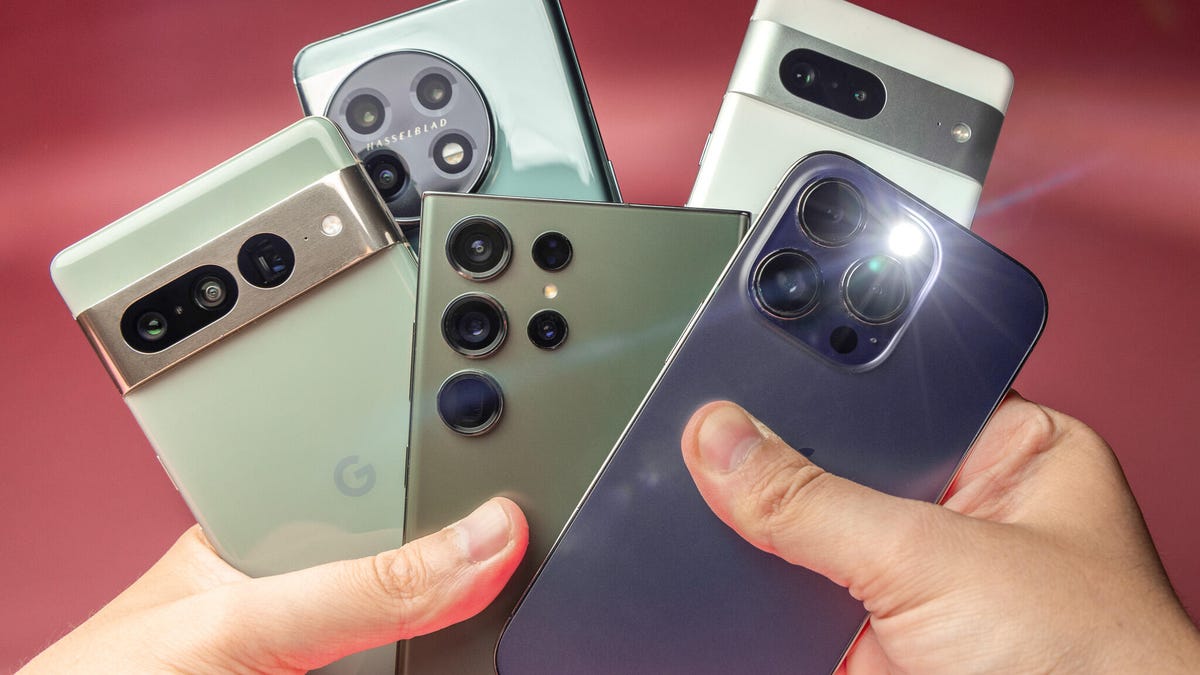We Don't Need New Phone Launches Every Year. Here's Why.
Commentary: Launching new phones less often would reduce the environmental impact and could make phones exciting again.

It's standard practice that phones from almost all brands, including Apple, Samsung and Google, are refreshed every year. It's a problem and it needs to stop. The production and shipping of new devices is a significant drain on the environment and I believe it's a major reason why the mobile phone industry continues to feel stagnant and boring. By switching to a two- or even three-year update cycle, phones could become exciting again and we'd be doing the planet a massive favor. Let me explain.
The industry runs like clockwork. We expect Apple to release new iPhones in September, Samsung to launch new Galaxy S-series phones in January or February and Google to debut new Pixels in October. This predictable cycle means that there's always a flashy new product to buy whether you're upgrading from a five-year-old handset or simply want the latest, greatest tech available.
It's a money-making exercise, designed to make you crave the next best thing and give more of your hard-earned cash to both the phone manufacturers and the cellular network providers you're likely buying from.
The biggest problem with these quick update cycles is the environmental drain it causes. The electronics industry is a dirty one. From the mining of rare earth minerals to be used in all manner of device components, to the factories and production lines, to the shipping of the products themselves, the environmental impact of your phone is huge. And while most companies now boast various amounts of recycled materials in their phones, the bigger help in reducing that impact would simply be to release new models less often.
If you look after your phone then you can reasonably expect it to last several years. Manufacturers like Google and Samsung have even increased the support periods of their phones beyond seven years, meaning the phone you buy today will be safe to use into the 2030s. Releasing phones less often would encourage people to hold onto their devices for longer, keeping devices out of landfills and requiring fewer resources to produce and ship brand new phones every year.
But the other problem I feel we're facing is how predictable phones are these days. Bigger screens, higher-resolution cameras and more powerful processors are the headline features year after year, and genuine innovation seems to have been abandoned in favor of box-ticking incremental upgrades. The Galaxy S24 Ultra is a great phone, but it's not wildly different from the S23 Ultra or the S22 Ultra before that. The iPhone 15 Pro -- is it that much different to the 14 Pro? I hoped that foldable phones might spark some excitement in the industry, but that hasn't happened yet, despite Google and OnePlus getting in on the folding game last year.
The Galaxy Z Fold 5 isn't a huge upgrade over last year's Z Fold 4.
With a two- or three-year update cycle, companies could hold on to those new features for longer, making the eventual launch of a new model seem like a bigger deal, with more valuable upgrades that we'd be excited to get hold of. Last year, I sat through Samsung's Unpacked event where the Galaxy Z Fold 5 was unveiled. It was a slight upgrade over the Z Fold 4, but when I compare it to the original Fold launched in 2019 the difference is huge.
Phone companies could adopt a similar model to the games console or camera industry. Sony took seven years to fully replace the PS4 with the PS5, while Canon replaced its 2016 5D Mark IV with the EOS R5 in 2020. And both the PS5 and the Canon R5 offered vast upgrades over their predecessors, dramatically changing the ways we used them and justifying the expense in upgrading. I spent thousands buying my Canon R5 when it launched. I wouldn't have done that if I knew it would simply be replaced next year.
The update cycles between new games consoles is usually at least a few years.
Few of us replace our TVs every year, or our cars, or our laptops, instead waiting for meaningful moments to change things up when that new technology -- be it electric power in your car or 8K HDR in your TV -- means we'll really see a benefit. These are items we may keep for at least five years before upgrading and the same should be true of our phones.
Releasing new flagship phones every two or three years would not only reduce the industry's environmental footprint, but by holding on to and refining those products, the launches would be much more exciting. And I miss the excitement.

